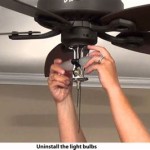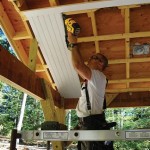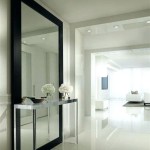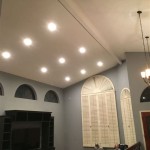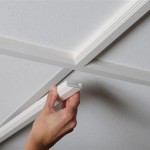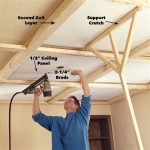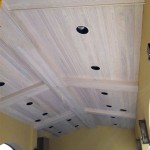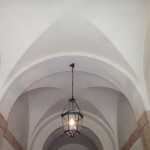Determining the Optimal Qualities of a Ceiling Fan
Selecting a ceiling fan involves carefully considering various features that contribute to its overall performance, energy efficiency, and longevity. A well-chosen ceiling fan can significantly impact a room’s comfort level, reduce energy consumption, and enhance the aesthetic appeal of the space. The term "best" is subjective and depends on individual needs and priorities. However, certain qualities consistently rank high in importance for most buyers.
This article examines several key qualities that contribute to a superior ceiling fan, enabling readers to make informed decisions based on their specific requirements. These qualities range from motor efficiency and blade design to control options and aesthetic considerations.
Motor Quality and Efficiency
The motor represents the core of a ceiling fan and directly influences its performance, noise level, and lifespan. Direct Current (DC) motors are generally considered superior to Alternating Current (AC) motors in terms of energy efficiency. DC motors consume significantly less power, often up to 70% less than comparable AC motors, while delivering equivalent or even superior airflow. This difference in energy consumption translates to cost savings over the lifespan of the fan. Furthermore, DC motors typically operate more quietly than AC motors, making them suitable for bedrooms and other noise-sensitive environments.
AC motors, while traditionally less expensive, can still offer acceptable performance, particularly in larger spaces where sheer power is a greater priority than incremental energy savings. However, even within AC motors, the quality varies substantially. Look for motors with sealed bearings, which require less maintenance and offer greater durability compared to motors with unsealed bearings. The motor housing material also impacts longevity. Robust materials like steel and aluminum provide better protection against wear and tear compared to cheaper plastic alternatives.
Motor size is another important consideration. A larger motor generally produces more torque, allowing the fan to move more air at lower speeds. This is particularly beneficial in rooms with high ceilings or large square footage. Additionally, a larger motor often translates to a longer lifespan, as it operates under less stress compared to a smaller motor working at maximum capacity.
Consider the motor's speed settings. A wider range of speeds offers greater flexibility in controlling airflow and noise levels. Some high-quality fans feature six or more speed settings, allowing for precise adjustments to match the user's comfort preferences. Lower speeds are ideal for gentle air circulation, while higher speeds provide more powerful cooling.
Blade Design and Materials
The design and material of the fan blades significantly influence its effectiveness in moving air and its aesthetic appeal. Blade pitch, which is the angle of the blades relative to the horizontal plane, is a critical factor in airflow. A steeper blade pitch typically moves more air, but it also requires more power from the motor. The optimal blade pitch depends on the size of the room and the desired level of airflow. Blades with a pitch between 12 and 15 degrees generally offer a good balance between airflow and energy efficiency.
Blade length also directly impacts airflow. Longer blades move more air compared to shorter blades, making them suitable for larger rooms. However, longer blades also require a more powerful motor to operate efficiently. The shape of the blades influences the direction and pattern of airflow. Aerodynamic blades, designed with curved or angled surfaces, can improve airflow efficiency and reduce noise. The number of blades is a matter of personal preference and design aesthetics, though some argue that more blades (five or six) tend to create a more gentle and diffused airflow, while fewer blades (three or four) may be more effective at moving air directly downwards.
The materials used in blade construction affect durability, weight, and aesthetics. Wood blades, made from solid wood or engineered wood products, offer a classic and elegant look. However, they can be susceptible to warping or cracking in humid environments. Plastic blades, such as ABS plastic, are lightweight, durable, and resistant to moisture damage. Metal blades, typically made from aluminum or steel, are strong and durable, but they can be noisier than wood or plastic blades. Each material offers a unique combination of benefits and drawbacks, and the best choice depends on the specific needs and preferences of the buyer.
Consider the blade finish. A smooth, non-porous finish reduces air resistance and makes the blades easier to clean. The finish should also be durable and resistant to fading or discoloration over time. Blades with a textured or decorative finish can add visual interest to the fan, but they may also be more difficult to clean.
Control Options and Functionality
The available control options significantly impact the user experience. Traditional pull chains are a simple and reliable method for controlling fan speed and light. However, remote controls offer greater convenience, allowing users to adjust settings from anywhere in the room. Some remote controls offer advanced features, such as speed memory, timer functions, and the ability to control multiple fans in a single room.
Wall controls provide another convenient option for controlling fan settings. Wall controls can be wired directly into the electrical system, eliminating the need for batteries. Some wall controls also offer advanced features, such as digital displays and programmable timers.
Smart ceiling fans offer the most advanced control options, allowing users to control the fan via smartphone apps or voice assistants. Smart fans can be integrated with other smart home devices, such as thermostats and lighting systems, to create automated cooling and lighting scenarios. Some smart fans also offer energy monitoring features, allowing users to track their energy consumption and identify opportunities for savings. The inclusion of lighting is a common feature in ceiling fans. The quality of the light fixture itself is important. Integrated LED lights are generally more energy-efficient and longer-lasting than traditional incandescent or halogen bulbs. The color temperature of the light can also be adjusted to suit different preferences.
Beyond speed and light control, some ceiling fans offer specialized features. Reverse function, which allows the fan to rotate in the opposite direction, is useful for circulating warm air during the winter months. This can help to reduce heating costs by distributing heat more evenly throughout the room. Damp-rated fans are designed for use in humid environments, such as bathrooms and covered patios. These fans feature moisture-resistant components and construction to prevent corrosion and electrical hazards.
Ease of installation is another aspect of functionality. A well-designed ceiling fan should be relatively easy to install, even for those with limited electrical experience. Clear and concise instructions, along with all the necessary hardware, are essential for a smooth installation process. Consider seeking professional installation if unfamiliar with electrical work.
Consider safety features such as blade safety clips. This prevents blades from detaching during operation. These features contribute to the overall safety and reliability of the ceiling fan.
Warranty information is crucial. A longer warranty period indicates the manufacturer's confidence in the product's quality and durability. Pay attention to the terms of the warranty, including what is covered and what is excluded.
Customer reviews can provide valuable insights into the real-world performance and reliability of a ceiling fan. Read reviews from multiple sources to get a balanced perspective on the product's strengths and weaknesses. Pay attention to comments about noise levels, airflow, and ease of installation.
The availability of replacement parts is another important consideration. If a component of the fan fails, it is essential to be able to obtain replacement parts quickly and easily. Check with the manufacturer or retailer to ensure that replacement parts are readily available.
Ultimately, the "best" ceiling fan is the one that best meets the individual user's needs and preferences. By carefully considering the qualities outlined above and conducting thorough research, consumers can make informed decisions and select a ceiling fan that provides years of reliable performance and comfort.
The price point should be considered in conjunction with other qualities. A higher price doesn't automatically guarantee superior quality, and a lower price doesn't necessarily indicate inferior performance. Evaluate the value proposition of each option, considering the features, performance, and durability offered in relation to the cost.

How To For A Ceiling Fan Reviews By Wirecutter

The Best Ceiling Fan Brand Hunter

Look For The Best Quality Ceiling Fans And Window

16 Best Ceiling Fans For Extra Airflow In 2024
Which Is The Best High Sd Ceiling Fan Quora

Hunter 53249 Pro S Best 52 Inch Brushed Nickel Ceiling Fan Tradingpostfansandlighting Com

Upgrade Your Airflow 3 Ways To Smarten Ceiling Fans Wirecutter

And Good Quality 25w Decorative Ceiling Led Fan With Light China Made In Com

44 Inch Hugger Indoor Ceiling Fan With Light Kit 5 Blades Reverse Airflow Home

Hunter 53250 Pro S Best 52 Inch New Broe Ceiling Fan Tradingpostfansandlighting Com
Related Posts

